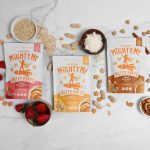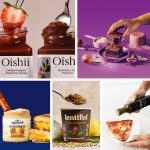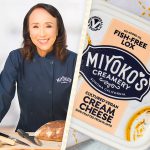Hershey Blames Not-So-Sweet Q3 Earnings on High Cocoa Prices, Pressure Across All Segments

The Hershey Company announced today it has downgraded its fiscal year 2024 guidance after high cocoa costs and increased pressure across all segments dragged down its third-quarter earnings.
In the quarter ended Sept. 29, the Reese’s and Skinny Pop maker saw consolidated sales dip 1.4% year-over-year to $2.9 billion as net price realization was “more than offset” by decreased volume across categories and the lapping of planned inventory increases within the North America Salty Snacks segment.
Reported net income also took a hit in Q3, falling 12.7% to $446.3 million, or $2.20 per diluted share. Adjusted earnings per diluted share decreased 10% to $2.34.
In prepared remarks, president and CEO Michele Buck said that while Hershey’s categories “remain relevant to consumers,” its performance has been “impacted by both industry-wide and Hershey-specific challenges,” including consumers’ budgetary trade-offs and evolving shopping habits related to ongoing inflationary pressures.
Regarding sector-wide headwinds, total snacking consumption softened to up 0.1% in the quarter from up 0.9% in Q2 as consumers seek value, budget for meals, and prioritize satiety. This shift has impacted trips to convenience and drug stores, where The Hershey Company over indexes, according to Buck. The evolution of shopping preferences is also affecting channels like club, dollar and online, where the company’s categories are less developed.
On a brand-specific level, Skinny Pop’s takeaway in MULO + convenience decreased low-single-digits, reflecting continued category softness and the planned movement of a large promotional program into Q4. However, Dot’s Homestyle Pretzels saw retail sales grow double-digits in the quarter, resulting in market share gain.
In Q3, Hershey also experienced company-specific challenges across all categories.
In the U.S., the company lost share to smaller players and private label in take-home chocolate, where it had previously gained a “significant share of shelf through the pandemic,” according to Buck. Additionally, Hershey experienced execution issues with plans for both confectionery and salty snacks.
“Olympics promotional programming fell short of our expectations as it competed for attention and resources with Back to School. In North America Salty Snacks, we experienced replenishment delays as we executed planned route-to-market changes,” said Buck. “As a result of these pressures, we are sharpening our seasonal planning and occasions strategies.”
Looking ahead, the company’s top priority is reigniting its chocolate business. For instant consumables, Hershey will expand the implementation of its “Gold Standard planogram” to improve productivity, findability, and margin accretive growth for retailers. The company will also redeploy trade and media investment to support brands like Almond Joy, Mounds, and PayDay, which have stronger velocities and brand equities than newer brands.
According to Buck, cocoa fundamentals are improving, and Hershey is confident there will be a global surplus in 2025 driven by a recovery in West Africa and significant production growth in the rest of the world. Until then, the “historically high cocoa inflation” will continue to impact earnings.
Executives declined to share specifics regarding future pricing actions related to high cocoa prices during a Q&A session with shareholders this morning. Instead, they simply stated, “We’d expect pricing next year to look a lot like this year. We’ll make sure we’re competitive and work with retailers to make sure we get good execution of that.”
Outside of chocolate, Hershey will also accelerate growth in sweets with recent launches like Jolly Rancher Freeze Dried, Jolly Ranchers Ropes, and Shaq-a-licious Gummies. The company’s sweets consumption grew from 5% in August to 9% in September to 23% in October.
“We are managing this business for the long term. Our team is taking action to control the variables we’re able to control, and we are carefully monitoring those we cannot. We are addressing consumer and customer evolution while also making organizational changes needed to ensure the competitive health of our business,” said Buck.
Based on its Q3 results, Hershey cut its 2024 guidance, now forecasting flat net sales growth, reported earnings per share declines between 6% and 9%, and adjusted earnings per share that are down mid-single-digits.
Last month, Hershey appointed former PepsiCo executive Michael Del Pozzo as president of U.S. Confection. In his first few weeks with the company, Del Pozzo has been engaging with customers and distributors, spending time in the market with Hershey’s retail sales team, and focusing on improving agility and speed, according to Buck.
“He has a very deep and rich background of being incredibly close to customers and retail, and I think he will dial that up further as we go forward to unlock new growth and continue to evolve our portfolio to those channels where consumers are migrating,” she told participants on the call.

















